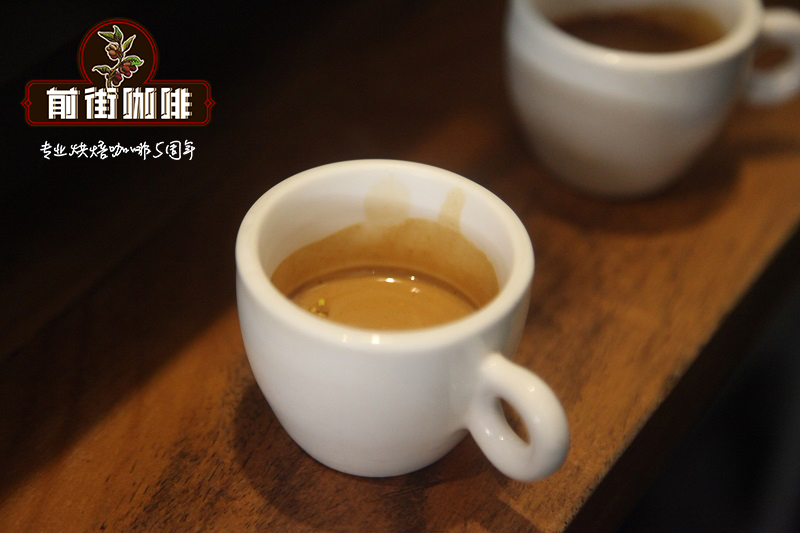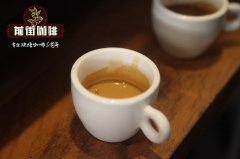Summary of espresso Espresso: how to make espresso with the thickest oil?

Professional coffee knowledge exchange More coffee bean information Please pay attention to coffee workshop (Weixin Official Accounts cafe_style)
Around the mid-1990s, there were a number of pioneers of Italian cafes in China.
The familiar is nothing more than Alomar Proole
And then there was La Crema, Norway Forest, CIA, and so on.
This batch of Italian coffee shops has a clear distinction from many Japanese cafes at that time
Although self-baked beans were not popular in China at the time
But the rich taste and aroma really give Chinese people accustomed to Japanese coffee another choice
Coupled with the smooth and easy entry after blending with fresh milk, the coffee consumption group has dropped significantly to young people
There are many secrets in the intervening 20 years
And the many memories of the change of dynasty
And the Starbucks that make or break it all...
Fortunately, however, there are many waves before and after the waves for China's coffee industry efforts continue
Let China achieve excellent results in international competitions these years
Congratulations-
Not much else to say…
Italian coffee is mainly the use of high-pressure short-term extraction of coffee liquid
There are many articles on the Internet and interviews that say "high temperature and high pressure" is a big fallacy
As described in previous chapters
Coffee extraction falls somewhere between 85 and 92.
Too high will easily have a bitter taste
This doesn't change because of high pressure.
That's why the first steam espresso machine was modified.
(Because the water has to be turned into steam and heated to 100 degrees to make coffee that is both bitter and free of grease)
"High pressure" is actually to shorten the time for water to pass through coffee powder
From Coffee Room 4-Grinding and Brewing Conditions
The relationship between brewing time and coffee powder thickness has already been mentioned
But under high pressure,
If it's pure, very fine coffee powder that's being passed through by high-pressure, high-velocity water
It is conceivable that coffee powder will be washed into a mess
To control this part,
There is also an additional "filling" action in the extraction process of espresso coffee_
1. Fill the ground coffee into a "filter"(mostly a 58mm or 52mm diameter metal perforated filter)
2. Scrape the coffee powder out of the filter
3. The coffee powder is pressed into a powder cake by applying a certain pressure to it by using a "pressure filler"
4. Place "Filter" in "Handle"
5. Turn the "handle" onto the "brewing head" and fix it
6. Turn on the switch to let hot water rush through the powder cake through high pressure
7. Coffee flows out of the guide below the handle and into the coffee cup
So that's the whole process of making espresso.
It seems simple...
In fact, the slight difference in each step will lead to a big difference in the final coffee extracted.
Espresso is all about amplifying all the flavors.
So the good will be magnified, the bad will be magnified.
differences are amplified--
From the fineness of the coffee powder,
In the world of espresso, grinding scales are no longer quantifiable in whole numbers of 1, 2, 3.
A grinder that grinds espresso coffee, and it has a turntable that doesn't have a grid.
It's like digital versus analog.
If the grid is digital, the espresso grinder is analog.
Maybe if you turn it a little bit, it will be different--
it is also worth mentioning
Whether the beans are fresh or freshly ground
can be easily judged by the state of espresso flow.
So it's important whether the coffee is fresh or freshly ground--
During the compaction process
The loose coffee powder will be compacted and compacted
It also means that the gap between the powder and the powder will narrow, and the flow path of the water will become smaller.
Water does not pass easily, which means that its pressure can be maintained
But the same flow path size, the same velocity,
It could be "very fine powder + light packing"
Or it could be "fine powder + heavy packing"
Although the flow rate is the same, the extraction degree is very different--
Therefore, when adjusting the taste, the scale and filling force must be considered at the same time!
Generally speaking, the pressure of the coffee machine is about 8--9 bar
Coffee can be extracted as long as the cake is not compacted to withstand pressures of 8- 9 bar.
In other words, it's also possible that the coffee won't flow--
As long as the powder is fine enough and the pressure is strong enough, it's possible.
Be especially careful at this time!
If the espresso doesn't flow or drips slowly,
Be careful that your hand gets squeezed by the pressure. You could get burned or break your handle.
Please pay special attention!
in addition
When filling, pay special attention to whether the surface of the powder cake is flat or skewed
Because high pressure water tends to flow to places where pressure can easily be vented.
So if you don't pack the cake surface flat
It's easy to cause water not to flow evenly through the cake
And extract coffee with uneven astringency and water--
Espresso extraction
About 1oz, that's about 28--30 c.c.
It flows slowly and slowly.
Its color brown with red called ochre red
It's sticky because it's rich in crema.
If you put it in a glass, you can see that espresso quickly separates.
The lower layer is a dark brown coffee liquid, and the upper layer is coffee crema with fine bubbles.
Crema dissipates over time.
Bubbles disappear and the oil melts into the coffee liquid
Generally, we call this time when crema has not dissipated the best time to drink
(Not necessarily so…)
To ration, use an ounce cup or a small electronic scale
Most home coffee machines should be able to set the flow rate
without
It depends on whether you measure it every time or feel it...
Another way to decide to stop extraction
either by experience or by color.
Usually during extraction
Crema's color will be lighter and lighter
From ochre at first to tan later
If it turns white ivory, stop.
Even a glass--
There's a situation where at first the flow rate is normal and beautiful
But the middle changes color so fast, it's like a faucet.
Then it's possible that there's a water hole around the powder cake.
resulting in a large amount of water passing through the water hole and forming an uneven extraction
It's best to stop as soon as possible.
If you've already extracted half a cup, you can at least drink some.
Otherwise, you'll only get water and over-extracted coffee--
Water holes may be caused by uneven filling
It is also possible that there is a gap between the cake and the filter due to knocking or other factors after the packing is completed
When high-pressure water comes, it flows to the big gap.
This is one of the most important things to watch out for when doing compression exercises!--
(The powder cake knocked out is very important-you can observe whether the extraction condition is uniform and good)
The espresso blockbuster a few years ago suggested a pattern
It's to separate the filter from the handle, fill the powder, and then put the handle back on.
reason is nothing more than
1. Easy packing
2. Handle and filter temperature
3. Not easy to clean
But in fact, these points are really visible
And temperature is not the truth
So use whatever you like--
Espresso has its own way of drinking--
Because the amount of espresso is small, the temperature is easily affected by the environment and quickly cools down
And cooling, in addition to temperature changes,
It also speeds up the dissipation of crema bubbles, causing a difference in taste.
To avoid this, most stores use espresso cups that are thick and preheated.
In fact, as long as you master the "quick drink" point, there is no problem with the choice of cups (of course, preheating is still necessary)
in Italy
It's all done right now, and then you kill it at the bar--
of course
You can drink it in one gulp or several gulps.
Just emphasize timing--
Important Notice :
前街咖啡 FrontStreet Coffee has moved to new addredd:
FrontStreet Coffee Address: 315,Donghua East Road,GuangZhou
Tel:020 38364473
- Prev

Italian espresso Espresso and Italian American coffee Caff è Americano gold cup standard
Professional coffee knowledge exchange more coffee bean information please follow the coffee workshop (Wechat official account cafe_style) espresso is brewed 2030ml single espresso at 6.510g or 4060ml double espresso at 1416g. Due to the extraction physics and efficiency of the Italian coffee machine, coffee brewed with a double powder cup generally tastes better than a single powder cup.
- Next

How to distinguish the quality of espresso? English Espresso explains all practices of espresso
Professional coffee knowledge exchange more coffee bean information Please follow the coffee workshop (Wechat official account cafe_style) in fact, Italian coffee is not only the American style, latte, cappuccino, but also many kinds of changes. A good cup of espresso depends on the quality of Espresso extraction. Before we talk about espresso, let's simply
Related
- Beginners will see the "Coffee pull flower" guide!
- What is the difference between ice blog purified milk and ordinary milk coffee?
- Why is the Philippines the largest producer of crops in Liberia?
- For coffee extraction, should the fine powder be retained?
- How does extracted espresso fill pressed powder? How much strength does it take to press the powder?
- How to make jasmine cold extract coffee? Is the jasmine + latte good?
- Will this little toy really make the coffee taste better? How does Lily Drip affect coffee extraction?
- Will the action of slapping the filter cup also affect coffee extraction?
- What's the difference between powder-to-water ratio and powder-to-liquid ratio?
- What is the Ethiopian local species? What does it have to do with Heirloom native species?

